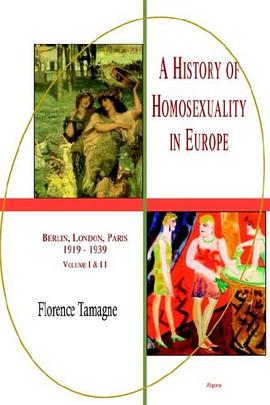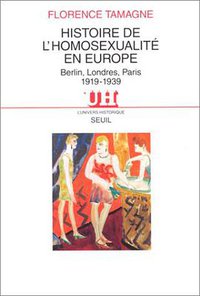A History Of Homosexuality In Europe
豆瓣
Berlin, London, Paris 1919-1939
Florence Tamagne
简介
What happened to homosexuals during and after World War II has been described in other books; here, Florence Tamagne traces the different trends in Germany, England and France in the period leading up to that cataclysm and provides important background to any understanding of the later events.
The period between the two world wars was crucial in the history of homosexuality in Europe. It was then that homosexuality first came out into the light of day. Berlin became the capital of the new culture and the center of a political movement seeking rights and protections for what we now call gays and lesbians. In England, the struggle was brisk to undermine the structures and strictures of Victorianism; whereas in France (which was more tolerant, over all), homosexuality remained more subtle and nonmilitant.
Volume I introduces the first glimmerings of tolerance for homosexuality around the turn of the last century, quickly squelched by the trial of Oscar Wilde which sent a chill throughout the cosmopolitan centers of the world. Then, a variety of factors came together in the aftermath of World War I to forge a climate that was more permissive and open. The Roaring Twenties are sometimes seen, in retrospect, as having been a golden age for homosexuals and lesbians; and the literary output of the era shows why.
Volume II, however, explores a different dynamic that was also taking shape, and how that played out. The Depression, the rise of fascist movements, and a counter-reaction against what were seen as the excesses of the post-war era contributed to a crackdown on homosexuals, and new forms of repression emerged.
However, the social and political backlash soon became apparent, first of all in Germany. Repression arrested the evolution of the new mores, and it was not until the 1960s that the wave of liberation could once again sweep the continent.
Tamagne's 2-volume work outlines the long and arduous journey from the shadows toward acceptability as the homosexual and lesbian community finds a new legitimacy at various levels of society. She weaves together cultural references from literature, songs and theater, news stories and private correspondence, police and government documents to give a rounded picture of the evolving scene.
A History of Homosexuality in Europe (1919-1939) was originally published in France by Editions du Seuil. This is the complete English translation. Volumes I and II are also sold separately.

